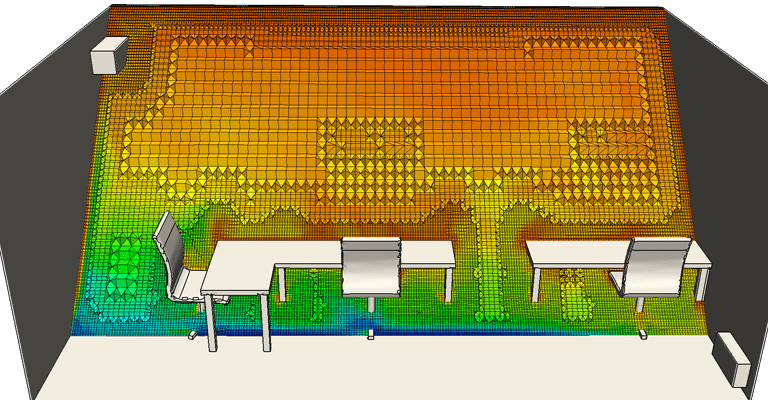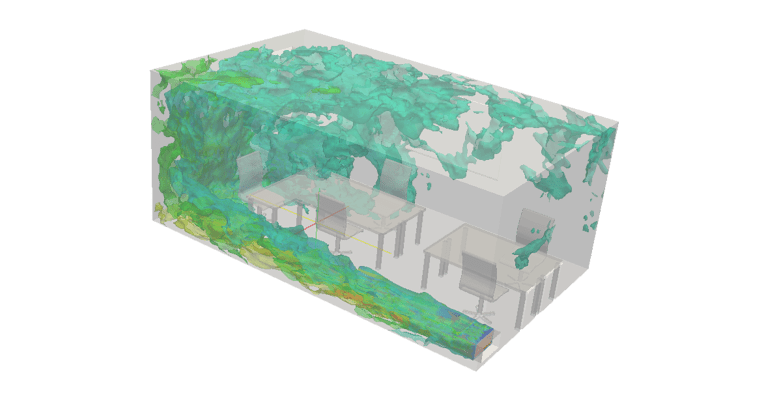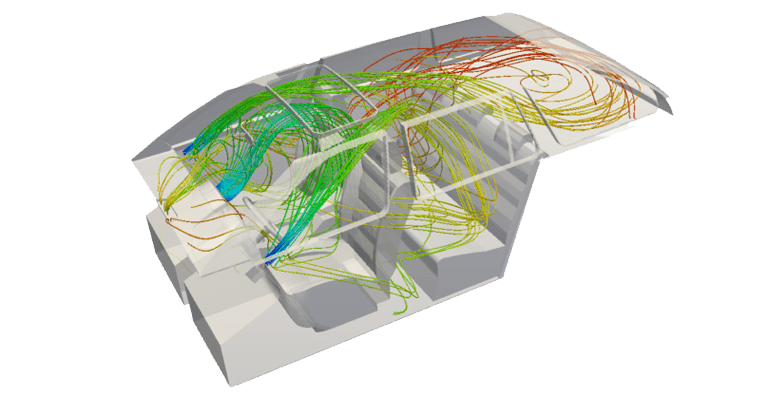Heating, ventilation and air conditioning systems are essential for a wide range of applications, from thermal comfort in office spaces, automobiles, and planes to data center cooling or indoor air quality in healthcare facilities.
Engineering simulation provides an efficient and accurate method for engineers and HVAC specialists to design, analyze, and optimize these systems.
Below you can find some examples of heating, ventilation and air conditioning systems analyses available in the SimScale Public Projects Library. All of them can be copied, modified and used as templates for your own simulation with the SimScale cloud-based platform for free.
HVAC Simulation 1. Air Conditioning in an Office Space

A natural convective heat transfer analysis was performed assuming fixed temperatures at the walls and air conditioning inlet. However, other boundary conditions could be applied, such as heat loss at windows or adiabatic walls. The room temperature and airflow throughout the room were also defined.
HVAC Simulation 2. Gas Distribution in an Office Space

A passive scalar transport analysis was completed to show how gas enters a room via the climate system. The results show the concentrations of the gas as it spreads throughout the room.\
HVAC Simulation 3. Cooling of a Server Room

A natural convective heat transfer analysis was done to determine the airflow velocity and temperature fields of a server room. Based on the results, the room layout and positioning of the ventilation and air conditioning units can be optimized for enhanced performance and energy savings.
HVAC Simulation 4. Airflow in a Hallway With an Open Door
For this simulation, a steady state natural convective heat transfer analysis was chosen. The indoor part of the hall, in addition to the outdoor environment, was modeled with a fixed temperature and zero-gradient boundary conditions were assigned, assuming cold weather conditions. Results include pressure and velocity fields, volume flux, and final temperature in the hallway.
HVAC Simulation 5. Car Cabin Airflow Analysis

A steady-state natural convective heat transfer analysis was carried out to simulate internal airflow in a car cabin. The cabin has a four-inlet air conditioning system located in the front dashboard and an outlet vent on the hood. The initial car temperature was 30 degrees Celsius, and the temperature of the airflow was set at 10 degrees Celsius. The final results demonstrated the airflow velocity through the cabin and the rate of cooling in the vehicle.
Conclusion
The heating, ventilation and air conditioning projects described above can be imported into your own workspace for free, to help you start your own simulation with minimum effort. If you have any questions regarding the platform or simulation in general, the SimScale Forum is the perfect place to ask them. To learn how to set up your own simulation with SimScale, you can choose from more than 50 webinars on different topics. Just pick one from here and watch the recording on the webinar’s dedicated page.


